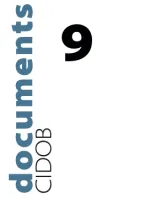Sayyid Ali Husayn Sistani: Revitalising the Najaf Marja’iyya in post-2003 Iraq

Documents CIDOB (Nova època): 9
This article is an in-depth portrait of Sayyid Ali Husayn Sistani as a supreme religious authority (marja’ al-taqlid) in Shia Is- lam. It identifies his religious priorities in dealing with the post-2003 Iraqi state and examines his political interventions in the light of his traditional religious responsibilities as marja’. Sistani’s engagement in shaping the relationship between religion and state is a promising and on-going attempt to bring together the high tradition of (Shiite) Islam with good governance in an unstable and highly fragmented Iraq. In fact, his advocacy for al-hukm al-rashid (the right, well-guided government) refers more frequently to the modern pillars of govern- ance, such as rule of law, transparent and fair elections, inclusiveness and accountability than to classical religious teachings – and is mark- edly differentiated from the theocratic doctrine of wilayat al-faqih (the government of the jurist) in neighbouring Iran.
Key words: Iraq, Sistani, Shi’ism-state relation, governance
E-ISSN: 2339-9570
D.L.: B 11.000-2014